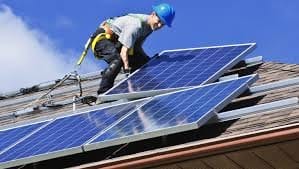Australian households and businesses investing in rooftop solar arrays may feel a little less like they are being ripped off come October, when a new rule will come into effect to help smooth the way to connecting clean energy generation to the national electricity grid.
Put forward by ClimateWorks Australia, the Property Council of Australia and Seed Advisory, and adopted last week by the Australian Energy Market Commission (AEMC), the reforms aim to make it cheaper, easier and faster for households and small business to invest clean and renewable energy systems, ranging from trigeneration plants to rooftop PV.
Until now, said Property Council CEO Peter Verwer in a statement on Tuesday, businesses looking to install solar and other clean energy systems faced “deal breaking connection times” of up to three years, as well as enormous up-front costs.
“Worse still,” he added, “smaller businesses, local councils and community groups have found it virtually impossible to overcome connection barriers, which are wasted opportunities for clean energy.”
The new rules – which will apply to all-sized embedded energy systems (household, business, power station) in Victoria and Queensland, and medium to large systems (over 5MW) in NSW, South Australia and Tasmania – will provide a clearer, more transparent connection process with defined timeframes and will require distributors to publish information to assist customers.
This will include the provision of standardised application forms; greater access to information on the connection process, possible costs and technical requirements; a connection process that is clear and consistently applied; and clarity on costs and exempting embedded generators from contributing to the cost of shared network augmentation.
As the first successful customer-led rule change to the National Energy Market (NEM), Verwer argues it could unleash untold pent-up potential for clean energy investment by the property market.
“The Property Council envisages green grids of buildings, neighbourhoods and city precincts that power themselves renewably,” Verwer said. “Green grids can complement centralised power stations, and will also evolve into localised, self-sufficient clean energy power stations.”
But the AEMC hasn’t always been so balanced in its approach to NEM reform in a changing energy landscape. Last year the regulator canvassed an idea to impose special tariffs on houses with PV on their rooftops, to account for their using less electricity from the grid.
As we wrote back then, the idea was a really bad one – and was described as such by the NSW parliamentary secretary for renewable energy, Rob Stokes. Stokes also noted that it was unfair, discriminatory, and – in a recognition of the growing numbers of solar households in middle Australia – plain bad politics.










